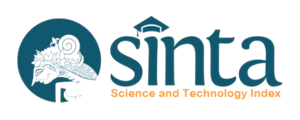THE USE OF LINGUISTIC MODALITY AMONG MALAYSIAN LECTURERS IN LANGUAGE EDUCATION CLASSROOM FOR TEACHER CANDIDATES
(1) Universiti Selangor, Malaysia
(*) Corresponding Author
Abstract
This study investigates the use of linguistic modality by Malaysian educators within the context of teaching English as a Second Language (TESL) programmes, focusing on its impact on teacher education and the engagement of prospective teachers. Six classroom observations and corresponding audio recordings were analysed using mixed-method content analysis to identify the frequencies and contexts of modal expressions. The findings revealed a predominant use of modalisation with high probability and a balanced modulation of obligation, alongside a notable use of low-inclination modalities. The lecturers used high-probability modal verbs to convey authority and certainty, while strategically using lower-probability modals to enhance engagement and promote critical thinking. Furthermore, the use of Malay modal expressions contributed to inclusivity and linguistic adaptability in the classroom. These results demonstrated the critical role of modality by educators in shaping the pedagogical communication of prospective teachers. The study highlights the essential need for educators to adeptly manage language choices to meet diverse educational needs and cultural contexts, thus improving teaching strategies in multilingual settings.
Keywords
Full Text:
PDFReferences
Achugar, M., Schleppegrell, M., & Oteíza, T. (2007). Engaging teachers in language analysis: A functional linguistics approach to reflective literacy. English Teaching: Practice and Critique, 6(2), 8-24.
Adenan, F. (2012). Systemic functional linguistics: Meaning carriers in functional grammar. Humaniora, 13(3), 221-232. https://doi.org/10.22146/jh.v13i3.728
Arifin, A. (2018). How non-native writers realize their interpersonal meaning? Lingua Cultura, 12(2), 155-161. https://doi.org/10.21512/lc.v12i2.3729
Arús, J., Bárcena, E., & Rodríguez, P. (2010). Fostering intercultural competence through contextualized texts in EFL settings. In Congreso Mapping Language Across (MLAC-2010).
Bailey, L. (1975). An observational method in the foreign language classroom: A closer look at interaction analysis. Foreign Language Annals, 8, 335-344. https://doi.org/10.1111/J.1944-9720.1975.TB01567.X
Banegas, D. L. (2021). Understanding the impact of teaching systemic functional grammar in initial English language teacher education. International Journal of Applied Linguistics, 31(3), 492-507. https://doi.org/10.1111/ijal.12346
Berry, M. (2013). Towards a study of the differences between formal written English and informal spoken English. In L. Fontaine, T. Bartlett, & G. O’Grady (Eds.), Systemic functional linguistics: Exploring choice (pp. 365-383). Cambridge: Cambridge University Press.
Daniello, F., Turgut, G., & Brisk, M. E. (2014). Applying systemic functional linguistics to build educators' knowledge of academic English for teaching writing. In A. Mahboob & L. Barratt (eds), Englishes in multilingual contexts: Multilingual education (Vol 10) (pp. 183-203). Dordrecht: Springer. https://doi.org/10.1007/978-94-017-8869-4_11
Danielsson, K., Jeppsson, F., Nestlog, E. B., & Tang, K.-S. (2023). Representations of science content in a primary classroom: Combining long and short timescales for multimodal analysis. Science Education, 107(5), 1561-1592. https://doi.org/10.1002/sce.21814
de Oliveira, L. C., & Schleppegrell, M. J. (2016). Focus on grammar and meaning. Oxford: Oxford University Press.
Depraetere, I., & Reed, S. (2020). Mood and modality in English. In B. Aarts, A. McMahon, & L. Hinrichs (eds.), The handbook of English linguistics (pp. 207-227). Chichester: John Wiley & Sons Ltd. https://doi.org/10.1002/9781119540618.ch12
Eggins, S. (2004). An introduction to systemic functional linguistics. London: Continuum International Publishing Group.
Ekawati, R. (2019). Power through linguistic modalities in Indonesian presidential speeches. Discourse and Interaction, 12(1), 5-28. https://doi.org/10.5817/DI2019-1-5
Elder, C., & Kim, S. (2013). Assessing teachers' language proficiency. In A.J. Kunnan (Ed.), The companion to language assessment (pp. 1-17). Chichester: John Wiley & Sons, Inc. https://doi.org/10.1002/9781118411360.WBCLA138
Endley, M. J. (2010). Linguistic perspectives on English grammar: A guide for EFL teachers. Charlotte, NC: Information Age Pub.
Fikri, Z., Dewi, N. N., & Suarnajaya, I. W. (2014). Mood structure analysis of teacher talk in EFL classroom: A discourse study based on systemic functional linguistic theory. Jurnal Pendidikan Bahasa Inggris Indonesia, 2(1). https://doi.org/10.23887/jpbi.v2i1.1361
Halliday, M. A. K., & Hasan, R. (1994). An introduction to functional grammar (2nd ed.). London: Edward Arnold.
Halliday, M. A. K., & Matthiessen, C. M. I. M. (2014). An introduction to functional grammar (4th ed.). London: Routledge.
Halliday, M. K. (2004). An introduction to functional grammar. London: Hodder Education.
Harnida, H., Zainuddin, Z., & Pulungan, A. H. (2021). Modality in teaching-learning process. Linguistik Terapan, 17(2), 131-138. https://doi.org/10.24114/lt.v17i2.22346.
Hsieh, H. F., & Shannon, S. E. (2005). Three approaches to qualitative content analysis. Qualitative Health Research, 15(9), 1277-1288. https://doi.org/10.1177/1049732305276687
Jong, E., & Gao, J. (2022). Preparing teacher candidates for bilingual practices: Toward a multilingual stance in mainstream teacher education. International Journal of Bilingual Education and Bilingualism, 26, 472-482. https://doi.org/10.1080/13670050.2022.2119072
Kader, M. I. B. A., Begi, N., & Vaseghi, R. (2013). A corpus-based study of Malaysian ESL learners' use of modals in argumentative compositions. English Language Teaching, 6(9), 146-157. https://doi.org/10.5539/elt.v6n9p146
Kashiha, H. (2018). Malaysian ESL students’ perception of metadiscourse in essay writing. Online Journal of Communication and Media Technologies, 8(3), 193-201. https://doi.org/10.12973/ojcmt/2650
Kongpetch, S., & Thienthong, A. (2021). Use of core modal verbs in academic writing of Thai EFL students. International Journal of Language and Literary Studies, 3(1), 277–291. https://doi.org/10.36892/ijlls.v3i1.509
Lee, K. (2013). Hedging expressions used in academic written feedback: A study on the use of modal verbs. Research in Corpus Linguistics, 1, 33-45. https://doi.org/10.4304/ricl.1.33-45
Lucas, T., & Villegas, A. (2013). Preparing linguistically responsive teachers: Laying the foundation in preservice teacher education. Theory Into Practice, 52, 109-98. https://doi.org/10.1080/00405841.2013.770327
Manaf, U. K. A. (2007). The use of modals in Malaysian ESL learners' writing (Doctoral dissertation). Universiti Putra Malaysia.
Matthiessen, C. (1995). Lexicogrammatical cartography: English systems. Tokyo: International Language Sciences Publishers.
Matthiessen, C., & Yousefi, M. (2022). Systemic functional linguistics as a resource for teacher education and writing development. Language, Context and Text. doi:10.1075/langct.20005.mat
Mei, T.L., Abdullah, A.N., Heng, C.S., & Kasim, Z.B.M. (2016). Language choice and use of Malaysian public university lecturers in the education domain. Advances in Language and Literacy Studies, Australian International Academic Centre, 7(1), 21-32. https://doi.org/10.7575/aac.alls.v.7n.1p.21
Montes, P.A.G., Barboza, A.M.S., & Olascoaga, A.I.L. (2014). Systemic functional linguistics and discourse analysis as alternatives when dealing with texts. Profile Issues in TeachersProfessional Development, 16(2), 101-116. https://doi.org/10.15446/profile.v16n2.38113
Montkhongtham, N. (2021). Medical uncertainty and the art of communication: Exploring modality applied in medical journal abstracts. LEARN Journal: Language Education and Acquisition Research Network, 14(1), 604–646.
Mukundan, J., & Khojasteh, L. (2011). Modal auxiliary verbs in prescribed Malaysian English textbooks. English Language Teaching, 4(1), 79-89. https://doi.org/10.5539/elt.v4n1p79
Mukundan, J., Saadullah, K. A., Ismail, R., & Jusoh, N. H. (2013). Malaysian ESL students' syntactic accuracy in the usage of English modal verbs in argumentative writing. English Language Teaching, 6(12), 98-105. https://doi.org/10.5539/elt.v6n12p98
Palmer, F. R. (2003). Modality in English: Theoretical, descriptive, and typological issues. In R. Facchinetti, M. Krug, & F. R. Palmer (Eds.), Modality in contemporary English (pp. 1-17). Berlin & New York: Mouton de Gruyter.
Palmer, F. R. (2007). Mood and modality. New York: World Book Publishing Company.
Puspitasari, V., Warsono, W., & Sutopo, D. (2021). The realization of mood and modality in the analytical exposition of the undergraduate students of Tidar University. English Education Journal, 11(3), 376-383. https://doi.org/10.15294/eej.v11i1.46349
Rahmasari, S., & Lauwren, S. (2020). Modality analysis on the official website of Indonesian tourism. Journal of Language and Literature, 15(1), 112-119. https://doi.org/10.15294/lc.v15i1.24453
Sagayadevan, V., & Jeyaraj, S. (2012). The role of emotional engagement in lecturer-student interaction and the impact on academic outcomes of student achievement and learning. Journal of the Scholarship of Teaching and Learning, 12, 1-30.
Sathappan, R., & Sathappan, D. (2018). TESL student teachers’ perspectives of practicum practices in a Malaysian teacher education institute. International Journal of Research-GRANTHAALAYAH, 6(2), 86–93. https://doi.org/10.29121/granthaalayah.v6.i2.2018.1548
Saunders, B., Sim, J., Kingstone, T., Baker, S., Waterfield, J., Bartlam, B., Burroughs, H., & Jinks, C. (2018). Saturation in qualitative research: Exploring its conceptualisation and operationalisation. Quality & Quantity, 52(4), 1893-1907. https://doi.org/10.1007/s11135-017-0574-8
Schulze, J. (2015). Academic language, English language learners, and systemic functional linguistics: Connecting theory and practice in teacher education. The CATESOL Journal, 21(1), 109-130.
Sharpe, T. (2008). How can teacher talk support learning? Linguistics and Education, 19, 132-148. https://doi.org/10.1016/J.LINGED.2008.05.001
Sidabutar, U. (2019). An analysis of modality on the delegation speeches of APEC conference 2013. Journal of English Teaching and Applied Linguistic (JETAL), 1(2), 1-13.
Simpson, A., Thwaite, A., & Jones, P. (2023). Research into dialogic pedagogy through the lens of educational linguistics. In A. Thwaite & A. Simpson (Eds.), Dialogic pedagogy: Discourse in contexts from pre-school to university (pp. 35-51). London: Routledge. https://doi.org/10.4324/9781003296744.
Singh, R. (2022). Systemic functional linguistics and inclusivity in the classroom. ERL Journal, 1(7), 75-85. https://doi.org/10.36534/erlj.2022.01.07
Suhadi, J. (2017). Epistemic modality and deontic modality: Two sides of a coin. JULISA, 11(2), 156-179. https://doi.org/10.31227/osf.io/wv7zx
Sunardi, S. (2013). Modality realization in a cross-cultural casual conversation: A systemic functional linguistic perspective. UNS Journal of Language Studies, 2(1), 68-80. https://doi.org/10.20961/prasasti.v2i1.326
Swanson, E. (2008). Modality in language. Philosophy Compass, 3, 1193-1207. https://doi.org/10.1111/J.1747-9991.2008.00177.X
Webster, J. (2013). M. A. K. Halliday. In C. A. Chapelle (Ed.), The encyclopedia of applied linguistics (pp. 2433-2436). Oxford, UK: Blackwell Publishing Ltd.
Wong, Y., & Yoong, D. (2019). ESL teachers' perceptions and practices of code-switching in a Malaysian Chinese independent secondary school. Journal of Modern Languages, 29, 45-66. https://doi.org/10.22452/jml.vol29no1.3
Yamat, H., Fisher, R., & Rich, S. (2014). Revisiting English language learning among Malaysian children. Asian Social Science, 10(3), 174-180. https://doi.org/10.5539/ass.v10n3p174
Yang, X., & Tao, X. (2018). Comparing discourse behaviors of a high-rated and a low-rated Chinese EFL teacher: A systemic functional perspective. The Modern Language Journal, 102(3), 594–610. https://doi.org/10.1111/modl.12495
DOI: https://doi.org/10.24071/llt.v27i1.7468
Refbacks
- There are currently no refbacks.
Copyright (c) 2024 Yeevon Wong, Wong Yeevon

This work is licensed under a Creative Commons Attribution-ShareAlike 4.0 International License.
LLT Journal: A Journal on Language and Language Teaching Sinta 1 Certificate
.jpg)

This work is licensed under CC BY-SA.
Creative Commons Attribution-ShareAlike 4.0 International License


.png)


















